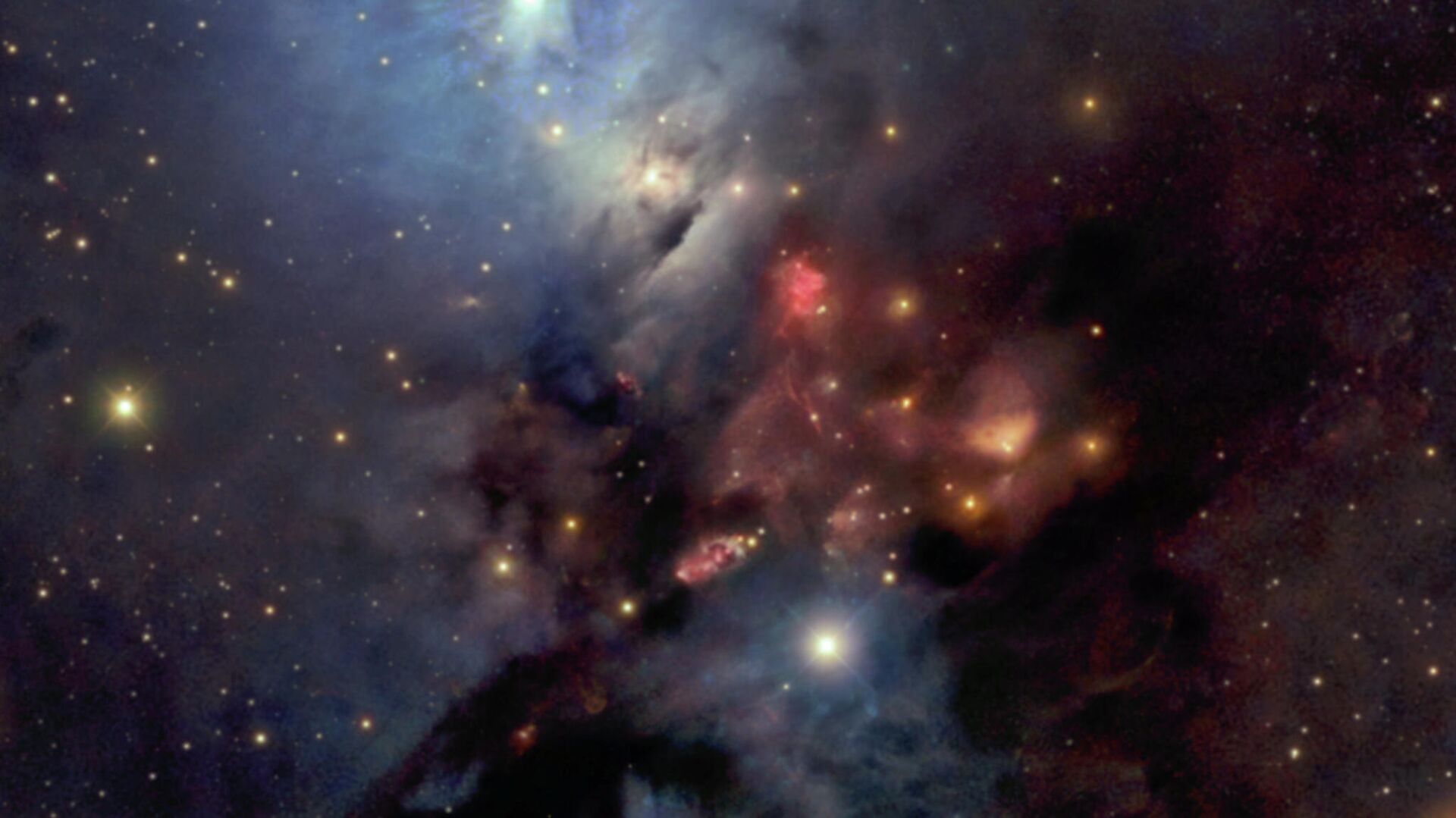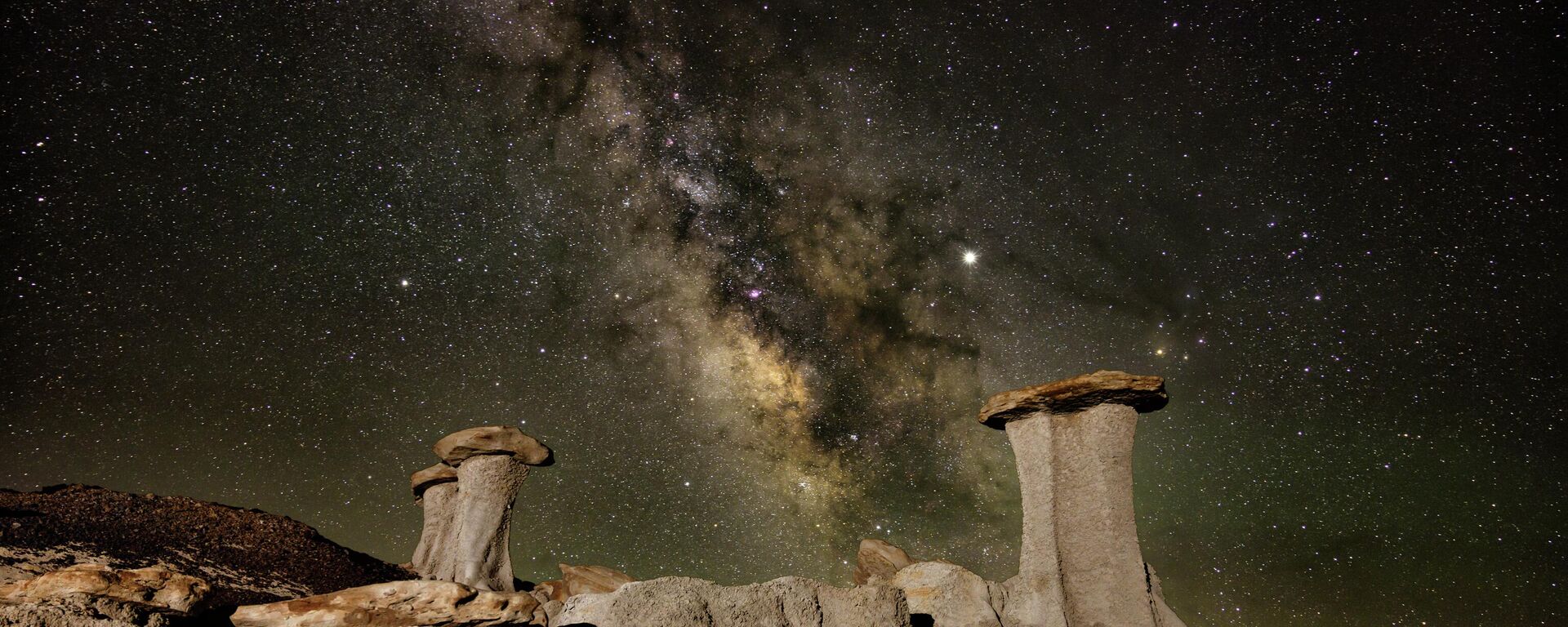https://sputnikglobe.com/20220524/scientists-believe-planets-around-sun-like-stars-are-more-suitable-to-have-water-alien-life-1095730651.html
Scientists Believe Planets Around Sun-Like Stars Are More Suitable to Have Water, Alien Life
Scientists Believe Planets Around Sun-Like Stars Are More Suitable to Have Water, Alien Life
Sputnik International
Because the Earth - as of yet the only known planet with life - orbits the sun, planetary systems around stars of similar size and type are logical targets for... 24.05.2022, Sputnik International
2022-05-24T03:53+0000
2022-05-24T03:53+0000
2023-04-12T16:57+0000
science & tech
stars
exoplanets
planet
new planet
space
https://cdn1.img.sputnikglobe.com/img/07e6/03/0f/1093877945_0:512:2047:1663_1920x0_80_0_0_06f34dd186b66be8b458de46ee4167db.jpg
Planets in binary systems built around sun-like stars could be great targets in the search for alien life, which could finally bring mankind the result it longs for, a new study published in the journal Nature suggests.Researchers believe that worlds orbiting binary systems, consisting of two stars gravitationally locked and in orbit around one other, may be the best route ahead in the quest. According to University of Copenhagen researchers, over half of the stars the size of the sun are in binary systems, where the energy stretches the habitable region further out and makes it larger.The findings determined that these stars warm each other's worlds, increasing the chances of being orbited by a planet with liquid water.Researchers noted in their study that the discovery is based on observations of a young double star around 1,000 light-years from Earth made by the Atacama Large Millimeter/submillimeter Array (ALMA) telescope in Chile. It's known as NGC 1333-IRAS2A and is encircled by a gas and dust disc. The researchers developed computer simulations that went back and forth in time.The circulation of gas and dust, for instance, does not follow a consistent pattern. It gets extremely powerful for "relatively" short periods of time over thousands of years. The binary star brightens up to a hundred times before returning to its original state. Because the two stars encircle one another, the researchers believe this cyclic pattern can be explained by duality.Their joint gravity will affect the surrounding disc at regular intervals, causing massive volumes of debris to fall toward the star.The research's star system, however, is still too young for planets to have formed, according to the study.According to Jorgensen, such molecules can be "building blocks for more complex molecules which are key to life as we know it. For example, amino acids which have been found in comets."ALMA is a collaboration of 66 telescopes that enable significantly higher resolution than could be achieved by a single telescope. Last December, NASA launched the James Webb Space Telescope, which is expected to join the quest for extraterrestrial life in the near future. The ELT (European Large Telescope) and the tremendously powerful Square Kilometer Array will be added before the end of the decade. The ELT will reportedly be the world's largest optical telescope, with a 39-metre mirror, and will study the atmospheric conditions of exoplanets outside the solar system.
https://sputnikglobe.com/20220504/take-a-seat-humanity-unlikely-to-hear-from-aliens-for-400000-years-scientists-say-1095247301.html
Sputnik International
feedback@sputniknews.com
+74956456601
MIA „Rossiya Segodnya“
2022
News
en_EN
Sputnik International
feedback@sputniknews.com
+74956456601
MIA „Rossiya Segodnya“
Sputnik International
feedback@sputniknews.com
+74956456601
MIA „Rossiya Segodnya“
science & tech, stars, exoplanets, planet, new planet, space
science & tech, stars, exoplanets, planet, new planet, space
Scientists Believe Planets Around Sun-Like Stars Are More Suitable to Have Water, Alien Life
03:53 GMT 24.05.2022 (Updated: 16:57 GMT 12.04.2023) Kirill Kurevlev
Managing Editor
Because the Earth - as of yet the only known planet with life - orbits the sun, planetary systems around stars of similar size and type are logical targets for astronomers looking for extraterrestrials.
Planets in binary systems built around sun-like stars could be great targets in the search for
alien life, which could finally bring mankind the result it longs for, a new study published in the journal Nature
suggests.Researchers believe that worlds orbiting binary systems, consisting of two stars gravitationally locked and in orbit around one other, may be the best route ahead in the quest. According to University of Copenhagen researchers, over half of the stars the size of the sun are in binary systems, where the energy stretches the habitable region further out and makes it larger.
The findings determined that these stars warm each other's worlds, increasing the chances of being orbited by a planet with liquid water.
"The result is exciting since the search for extra-terrestrial life will be equipped with several new, extremely powerful instruments within the coming years," Professor Jes Kristian Jorgensen, one of the study's main authors, is quoted in the Daily Mail report as saying. "This enhances the significance of understanding how planets are formed around different types of stars. Such results may pinpoint places which would be especially interesting to probe for the existence of life."
Researchers noted in their study that the discovery is based on observations of a young double star around 1,000 light-years from Earth made by the Atacama Large Millimeter/submillimeter Array (ALMA) telescope in Chile. It's known as NGC 1333-IRAS2A and is encircled by a gas and dust disc. The researchers developed computer simulations that went back and forth in time.
The circulation of gas and dust, for instance, does not follow a consistent pattern. It gets extremely powerful for "relatively" short periods of time over thousands of years. The binary star brightens up to a hundred times before returning to its original state. Because the two stars encircle one another, the researchers believe this cyclic pattern can be explained by duality.
Their joint gravity will affect the surrounding disc at regular intervals, causing massive volumes of debris to fall toward the star.
"The observations allow us to zoom in on the stars and study how dust and gas move towards the disc," said co-author Dr. Rajika Kuruwita. "The simulations will tell us which physics are at play, and how the stars have evolved up till the snapshot we observe, and their future evolution."
The research's star system, however, is still too young for planets to have formed, according to the study.
"Comets are likely to play a key role in creating possibilities for life to evolve. Comets often have a high content of ice with the presence of organic molecules," Jorgensen said, per the report. "It can well be imagined that the organic molecules are preserved in comets during epochs where a planet is barren, and that later comet impacts will introduce the molecules to the planet's surface. The heating caused by the bursts will trigger evaporation of dust grains and the ice surrounding them. This may alter the chemical composition of the material from which planets are formed. The wavelengths covered by ALMA allow us to see quite complex organic molecules, so molecules with 9-12 atoms and containing carbon."
According to Jorgensen, such molecules can be "building blocks for more complex molecules which are key to life as we know it. For example, amino acids which have been found in comets."
ALMA is a collaboration of 66 telescopes that enable significantly higher resolution than could be achieved by a single telescope.
Last December, NASA launched the James Webb Space Telescope, which is expected to join the quest for extraterrestrial life in the near future. The ELT (European Large Telescope) and the tremendously powerful Square Kilometer Array will be added before the end of the decade. The ELT will reportedly be the world's largest optical telescope, with a 39-metre mirror, and will study the atmospheric conditions of exoplanets outside the solar system.


